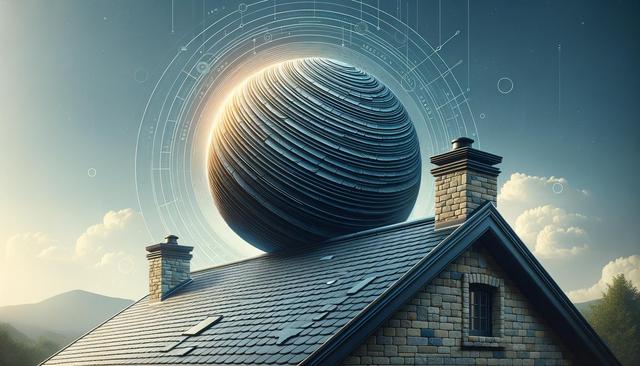What Affects the Price of Slate Roofing?
The cost of a slate roof can vary significantly based on several factors. The type of slate used, the size of the roof, the complexity of the installation process, and regional labor costs all influence the final price. Natural slate is typically more expensive than synthetic alternatives due to its longevity and distinct visual appeal. In general, homeowners can expect a higher initial investment compared to other roofing materials.
Key factors impacting slate roofing prices include:
- Material type: Natural slate versus synthetic options
- Roof size and design: Larger or more complex roofs require more labor and materials
- Labor costs: Vary depending on location and contractor expertise
- Slate thickness and quality: Higher-grade slates are more expensive
It’s important to note that while the upfront cost can be higher, slate roofs offer long-term value through their durability and low maintenance requirements.
Regional Variations in Slate Roofing Costs
Slate roofing prices are not uniform across regions. In areas where slate is more readily available or where the material is commonly used, prices may be more competitive. Conversely, in regions where slate roofing is considered a specialty, homeowners may face higher material and labor costs due to limited availability and fewer experienced installers.
For example, homes in the northeastern United States often feature slate roofs due to the proximity to natural slate quarries. In contrast, regions where asphalt shingles dominate may see higher costs for slate due to transportation and specialized labor needs.
To get the most accurate pricing, it’s advisable to:
- Request quotes from multiple local contractors
- Compare the types and grades of slate offered
- Evaluate installation timelines and warranties
Regional demand and climate also play a role in pricing. Areas prone to severe weather may require thicker, more durable slate, which can increase the overall cost.
Sales Trends in Slate Roofing
Slate roofing sales have seen gradual increases as more homeowners seek sustainable and long-lasting materials. With growing interest in eco-friendly construction, slate’s natural origin and longevity make it an appealing choice. Additionally, the rising popularity of historic renovations and luxury homes has contributed to steady demand for slate roofing.
Trends influencing slate roofing sales include:
- Increased focus on sustainability and green building materials
- High-end residential construction incorporating natural materials
- Renovations of historic buildings requiring authentic materials
Manufacturers have also responded to demand by offering a wider range of slate colors and synthetic alternatives, making the material accessible to more homeowners. These synthetic options mimic the appearance of natural slate while offering a lower price point and easier installation.
Finding Slate Roofing Deals and Discounts
Although slate roofing is a premium product, there are ways to find cost savings. Seasonal promotions, bulk purchasing, and contractor partnerships can lead to better pricing. Some suppliers offer discounts during slower seasons or when ordering materials for multiple projects at once.
Tips for finding sales and deals:
- Look for off-season sales — late fall and early winter are often slower for roofing jobs
- Ask contractors about supplier discounts or special offers
- Consider synthetic slate as a lower-cost alternative
- Check for local government incentives or green building rebates
Homeowners should also inquire about warranty coverage and installation guarantees, as these can add value and peace of mind over time. Investing in quality installation from experienced professionals can also prevent costly repairs down the line.
Is Slate Roofing Worth the Investment?
While the initial cost of slate roofing can be higher than other materials, its long lifespan—often over 75 years—makes it a practical investment for many homeowners. Slate’s resistance to fire, mold, and weather damage adds to its appeal, especially in regions with harsh climates.
Considerations for evaluating the investment include:
- Longevity: Slate roofs can last a lifetime with proper care
- Maintenance: Requires less frequent repairs than other materials
- Energy efficiency: Natural slate helps regulate indoor temperatures
- Resale value: Slate roofing can enhance a home’s market appeal
Ultimately, homeowners should weigh both the upfront costs and the long-term benefits. For those planning to stay in their homes long-term or seeking to enhance property value, slate roofing offers a combination of durability and aesthetic value that few other materials can match.
Conclusion: Making an Informed Decision on Slate Roofing
Slate roofing remains a strong choice for homeowners seeking a long-lasting, elegant solution for their homes. While the price may seem high initially, the potential for decades of performance, minimal maintenance, and increased property value makes it a worthwhile consideration. By understanding regional pricing, current sales trends, and available discounts, homeowners can make a more informed and confident purchase decision.


